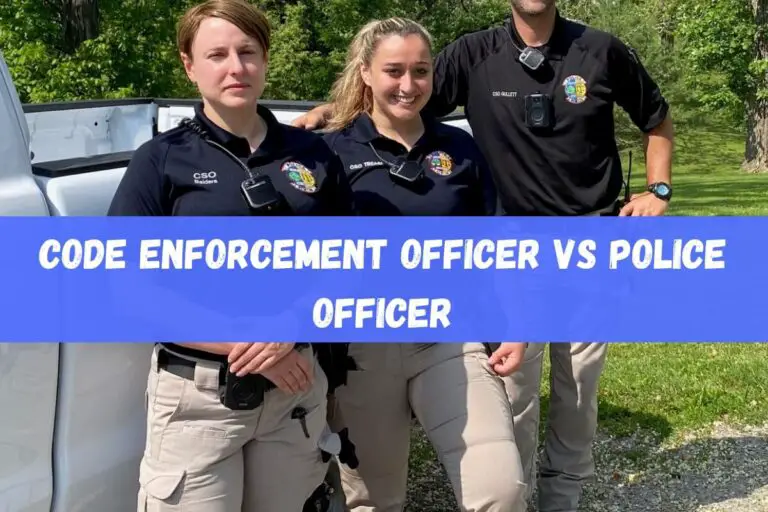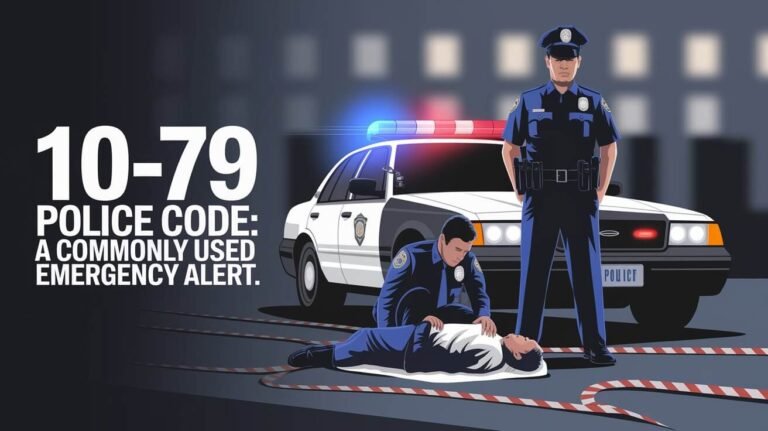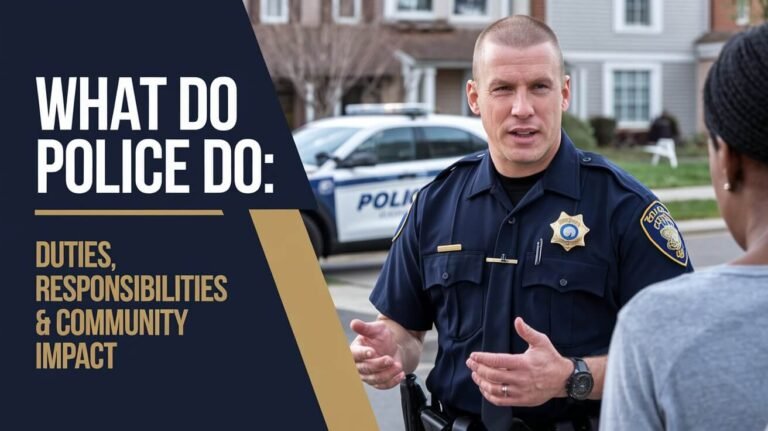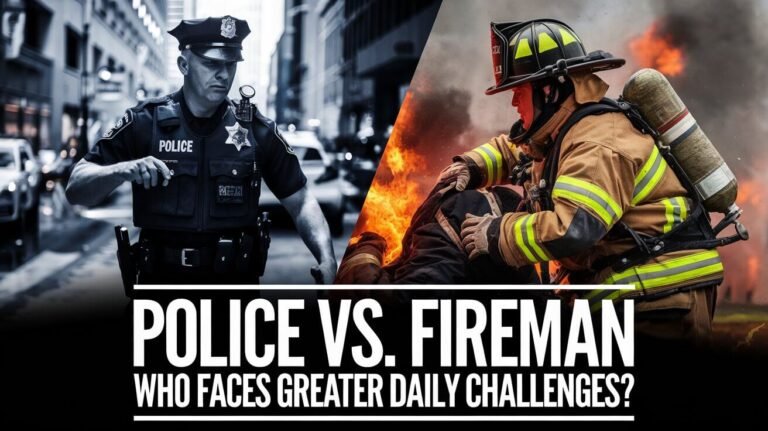420 Police Code Means and Its Real Law Enforcement Use

The term “420” has become synonymous with cannabis culture, but its origins are rooted in a story that began in the 1970s among a group of high school students in San Rafael, California.
These students used “420” as a code to refer to their plans to search for a hidden cannabis crop. Over time, the term evolved and spread, becoming a global phenomenon associated with marijuana enthusiasts and influencing marijuana laws.
Interestingly, “420 police code” is often misunderstood, and its connection to law enforcement is more nuanced than one might expect. As we explore the history and evolution of “420,” we’ll uncover how it has become intertwined with both cannabis culture and law enforcement practices.
Key Takeaways
- The term “420” originated from a group of high school students in California.
- It has become a global phenomenon associated with cannabis culture.
- The connection between “420” and law enforcement is complex.
- “420 police code” is often misunderstood.
- The term has influenced marijuana laws and cultural perceptions.
Origin Story Behind the Numbers
Behind the ubiquitous code “420” lies a fascinating origin story rooted in 1970s California. The term, now globally recognized, has its roots in the adventures of a group of high school students.
San Rafael Connection
The story begins in San Rafael, California, where a group of friends known as “The Waldos” attended San Rafael High School. In 1971, they used “420” as a code to meet at 4:20 PM to search for a hidden cannabis crop. This code eventually became a slang term for cannabis consumption. The Waldos’ use of “420” as a secret code was a crucial element in its initial popularity.
Key Facts About The Waldos:
| Name | Role | Contribution |
|---|---|---|
| Steve Hager | Member | Popularized the term through his High Times involvement |
| Other Waldos Members | Members | Coined and initially used the term “420” |
From Teenage Slang to Global Phenomenon
From its humble beginnings, “420” spread beyond San Rafael, largely due to the growing cannabis culture of the 1970s and 1980s. As cannabis enthusiasts and the broader counterculture movement adopted the term, it became a staple of cannabis identity. Today, “420” is celebrated worldwide on April 20th (4/20), symbolizing the convergence of cannabis culture and community.
The global phenomenon of “420” is a testament to the power of grassroots cultural movements. From its origins as a simple code among teenagers, “420” has evolved into a symbol of cannabis culture, embraced by advocates and enthusiasts alike.
Official 420 Police Code Definition
The term “420” has become ubiquitous in popular culture, but its origins and meaning within law enforcement contexts are often misunderstood. Despite popular belief, “420” is not an official police code for cannabis possession. Instead, it is essential to understand the standard police radio codes and their meanings to grasp what officers mean when they use this term.
Standard Police Radio Codes Decoded
Police radio codes, also known as “ten-codes,” are used by law enforcement agencies to communicate efficiently and effectively. These codes were developed to convey complex information quickly over radio communications. Standard police radio codes vary by department, but they generally follow a similar structure. For instance, codes often start with a number, followed by a specific description or action required.
Some common police radio codes include “10-4,” meaning “acknowledged” or “message received,” and “10-20,” indicating “location.” Understanding these codes is crucial for deciphering police communications.
What Officers Mean When They Say “420”
In law enforcement contexts, “420” is actually related to the California Penal Code Section 420, which deals with obstructing or resisting an officer in the performance of their duties, among other things. This has no direct relation to cannabis or its possession. The confusion likely arose from the widespread cultural association of “420” with cannabis, which has become a significant part of the counterculture movement.
Officers using “420” in their communications are generally referring to the specific penal code section relevant to their jurisdiction, not the cannabis culture phenomenon.
Law Enforcement vs. Counterculture Meanings
The dual usage of “420” highlights a fascinating dichotomy between official police terminology and cannabis culture adoption. On one hand, law enforcement agencies utilize the code as part of their radio communications. On the other, the cannabis counterculture has embraced “420” as a symbol of identity and solidarity.
Official Police Terminology
In the context of law enforcement, “420” is often used to signify a specific code or status in radio communications. This usage is typically formal and procedural, adhering to standardized police protocols. The term is employed to convey information efficiently and clearly among officers.
Cannabis Culture Adoption
In stark contrast, the cannabis culture has adopted “420” as a celebratory term, symbolizing the consumption and advocacy of cannabis. This usage is deeply rooted in the counterculture movement of the 1970s and has since become a global phenomenon, with April 20th (4/20) being celebrated annually by cannabis enthusiasts.
The divergence in meanings underscores the complex and multifaceted nature of the term “420.” While law enforcement uses it for operational purposes, the counterculture has transformed it into a cultural icon, reflecting the dynamic interplay between official discourse and grassroots movements.
Historical Timeline of 420 References
Tracing the historical timeline of “420” references reveals a complex interplay between police usage and cultural milestones. The evolution of “420” is a story that involves both law enforcement practices and the burgeoning cannabis culture of the 1970s and beyond.
Early Police Usage Records
The earliest recorded use of “420” in a law enforcement context dates back to the 1970s in California. It was used as a code to signify cannabis-related offenses or activities. This code was part of a broader set of numerical codes used by police departments for quick communication over radio channels.
Cultural Tipping Points
Several cultural events and milestones contributed to the widespread adoption of “420.” One significant tipping point was the annual “420” celebrations that began among cannabis enthusiasts, often tied to April 20th (4/20). These events gained popularity through the 1990s and 2000s, propelled by internet forums and social media.
| Year | Event | Significance |
|---|---|---|
| 1971 | First recorded police use of “420” | Origins in law enforcement communication |
| 1990s | Rise of cannabis culture events on 4/20 | Cultural adoption and annual celebrations |
| 2000s | Mainstream recognition and media coverage | Widespread awareness and normalization |
Historical timeline of “420” references highlights the term’s transition from a specific police code to a global phenomenon associated with cannabis culture.
Myths and Facts About 420 Police Code
Misconceptions about ‘420’ abound, but what’s the real story behind this infamous number? The term “420” has become deeply ingrained in cannabis culture, but its origins and meaning are often shrouded in mystery.
False Origins Debunked
Several myths have emerged regarding the origin of “420.” Two of the most prevalent myths involve Bob Marley and police scanner codes.
The Bob Marley Myth
One common myth suggests that “420” originated from Bob Marley’s song “42,000 Dead and Gone” or other related song titles. However, there is no direct link between Bob Marley’s music and the term “420” as it relates to cannabis or police codes.
The Police Scanner Theory
Another myth claims that “420” was a police code for cannabis-related offenses. While it’s true that police departments use coded language, the theory that “420” was specifically used as a universal code for cannabis is unfounded.
Verified Historical Records
Historical records indicate that “420” originated from a group of teenagers in San Rafael, California, in the 1970s. They used “420” as a code to refer to their plans to search for a hidden cannabis crop.
| Year | Event | Description |
|---|---|---|
| 1971 | Origin | “420” was used by a group of teenagers in San Rafael, California. |
| 1990s | Mainstream Recognition | The term gained popularity through cannabis culture and media. |
| Present | Cultural Significance | “420” is now globally recognized, associated with cannabis use and culture. |
Modern Police Departments and Code 420
Law enforcement agencies across the United States have different understandings and uses of the ‘420 code.’ This variation reflects the diverse cultural, legal, and operational contexts within which police departments operate.
Current Protocol Implementation
Many modern police departments have integrated the ‘420 code’ into their communication protocols, although its meaning can vary significantly. Some departments use it to refer to cannabis-related incidents or to signal that a situation involves marijuana.
The implementation of ‘420’ in police protocols is often influenced by local laws and community attitudes towards cannabis. For instance, in regions where cannabis is legalized, the code might be used more frequently and with different connotations compared to areas where it remains illegal.
Regional Code Variations Across States
Regional variations in the use and interpretation of ‘420’ are notable across different states. A comparative analysis of police departments in states with legalized cannabis versus those without reveals distinct patterns in code usage.
| State | Cannabis Legal Status | Typical Use of ‘420’ Code |
|---|---|---|
| California | Legalized | Frequently used for cannabis-related incidents |
| Texas | Illegal (except for limited medical use) | Rarely used; when used, often related to drug offenses |
| Colorado | Legalized | Used in context of cannabis regulation and compliance |
Legal Consequences Related to 420
The legal landscape surrounding “420” is complex, with court cases reflecting the evolving perceptions of cannabis use. As cannabis laws continue to shift, the term has become a significant factor in legal discussions and courtroom debates.
Notable Court Cases
Several court cases have highlighted the legal implications of “420.” For instance, cases involving the use of “420” in contexts other than cannabis consumption have led to discussions on trademark law and brand identity. Trademark disputes have arisen when companies have attempted to trademark names or slogans related to “420.”
In one notable case, a court ruled that a cannabis-related business could not trademark a name that included “420” due to the term’s widespread cultural use. This decision underscored the challenges of protecting brand identities in a landscape where “420” has become synonymous with cannabis culture.
Judicial Interpretations Over Time
Judicial interpretations of “420” have evolved significantly over time. Initially, the term was often associated with police codes for cannabis use. However, as cannabis culture has become more mainstream, courts have begun to recognize “420” as a term with multiple meanings, including its use in popular culture and as a symbol of cannabis advocacy.
Courts have had to navigate the nuances of “420” in various legal contexts, from trademark disputes to criminal cases involving cannabis. The evolving judicial interpretations reflect a growing understanding of the term’s cultural significance and its implications for law enforcement and cannabis policy.
420 Police Code in Media and Entertainment
“420” is more than just a number; it’s a cultural reference that has been woven into the fabric of media and entertainment. This phenomenon has not only reflected the growing acceptance of cannabis culture but has also played a significant role in shaping it.
Hollywood Portrayals
In Hollywood, “420” has been featured in various films and TV shows, often as a nod to cannabis culture. Movies like “Pineapple Express” and TV series such as “That ’70s Show” have used “420” in their storylines, introducing the term to a broader audience. These portrayals have contributed to the normalization of cannabis use, making “420” a household term.
Music Industry References
The music industry has also embraced “420,” with numerous artists referencing it in their songs. From hip-hop to rock, “420” has become a lyrical staple, symbolizing cannabis culture. Artists like Snoop Dogg and Wiz Khalifa have been particularly vocal about their affinity for “420,” further cementing its place in popular culture.
How 420 Shaped Marijuana Policy Reform
With its roots in counterculture, “420” has evolved into a symbol of the marijuana legalization movement. The term has become synonymous with cannabis culture, influencing not only public perception but also legislative efforts.
The “420” movement has been instrumental in shaping marijuana policy reform. Through various channels, including activism and annual protests, the movement has contributed to a shift in public opinion and, subsequently, legislative changes.
Activism and Annual Protests
Activism has played a crucial role in the “420” movement, with annual protests and events drawing attention to the cause. Organizations and individuals have used these events to raise awareness about marijuana legalization and push for policy reform.
Some notable examples of activism include:
- Annual 420 marches and rallies
- Campaigns to educate the public about cannabis
- Lobbying efforts to influence legislation
Legislative Changes Since the 1970s
The “420” movement has coincided with significant legislative changes regarding marijuana. Since the 1970s, there have been numerous attempts to reform cannabis laws, with some notable successes.
| Year | Legislative Change | Description |
|---|---|---|
| 1973 | Oregon Decriminalizes Marijuana | Oregon becomes the first state to decriminalize marijuana, marking a significant shift in cannabis legislation. |
| 1996 | California Proposition 215 | California passes Proposition 215, allowing for the medical use of marijuana. |
| 2012 | Colorado and Washington Legalize Recreational Marijuana | Colorado and Washington become the first states to legalize recreational marijuana, paving the way for other states to follow. |
The “420” movement has been a driving force behind these legislative changes, contributing to a more permissive environment for cannabis use.
Digital Era and 420 References
The digital landscape has transformed “420” into a global phenomenon. This transformation is largely attributed to the rise of social media and online communities that have embraced the term.
The way people celebrate and discuss “420” has changed dramatically with the advent of the digital era. Social media platforms and online forums have become hubs for cannabis culture, with “420” being a central theme.
Social Media Celebrations
Social media has played a pivotal role in popularizing “420.” Platforms like Instagram, Twitter, and Facebook are flooded with “420”-related content on April 20th. Users share memes, cannabis-related products, and experiences, creating a global celebration.
Brands and businesses also participate, often using the occasion to promote cannabis-friendly products and services. This widespread participation has turned “420” into a significant cultural event.
Online Community Development
The digital era has also seen the development of online communities centered around cannabis culture. Forums and social media groups dedicated to cannabis have become spaces where people share information, experiences, and support.
These communities have fostered a sense of belonging among cannabis enthusiasts and advocates. They play a crucial role in shaping the narrative around cannabis and influencing public perception.
Examining the impact of the digital era on “420,” it’s clear that technology has amplified the term’s reach and cultural significance.
Future Landscape of Cannabis Codes
As cannabis legalization continues to sweep across the United States, the future of cannabis codes like “420” is poised for significant changes. The evolving landscape of cannabis legislation and cultural acceptance is likely to influence how law enforcement agencies use and interpret these codes.
The term “420” has become synonymous with cannabis culture, but its origins and usage are more complex. As we look to the future, understanding the dynamics between official police communications and the cultural significance of cannabis codes will be crucial.
Evolving Police Communications
Police departments are continually updating their communication protocols to reflect changing laws and societal norms. The use of codes like “420” is expected to adapt to these changes, potentially becoming more standardized or evolving to reflect new legal realities.
For instance, some police departments might adopt more specific codes to differentiate between various cannabis-related offenses, while others might phase out the use of “420” altogether in favor of more descriptive language.
| Current Practice | Future Trend | Potential Impact |
|---|---|---|
| Varied use of “420” across departments | Standardization of cannabis codes | Improved clarity in police communications |
| Limited differentiation between cannabis offenses | Adoption of more specific cannabis-related codes | Enhanced precision in law enforcement |
Predicted Cultural Shifts
Cultural attitudes toward cannabis are shifting rapidly, with significant implications for how cannabis codes are perceived and used. As cannabis becomes more mainstream, the cultural significance of “420” may evolve, potentially becoming more of a nostalgic reference than a contemporary code.
The rise of new cannabis-related terminology and codes could also influence the future landscape, reflecting changing user behaviors and cultural norms.
- Increased normalization of cannabis use
- Emergence of new cannabis-related codes and terminology
- Potential decline in the use of “420” as a cultural reference
Conclusion
The term “420” has evolved significantly from its origins, becoming a widely recognized symbol in cannabis culture. Initially used as a police code, its meaning has expanded to represent a global phenomenon associated with marijuana use and advocacy.
The 420 police code has played a significant role in shaping the cannabis community, influencing both cultural and legislative changes. As society continues to evolve, understanding the history and significance of “420” provides valuable insights into the ongoing dialogue around marijuana policy reform.
Impact of cannabis culture on modern society is multifaceted, reflecting changing attitudes toward marijuana use and its legalization. As we look to the future, the continued evolution of “420” as a cultural symbol will likely be shaped by ongoing discussions around cannabis policy and its societal implications.
Post-Specific FAQs
What is the origin of the term “420”?
The term “420” originated with a group of friends known as the Waldos at San Rafael High School in California, who used it as a code to meet at 4:20 PM to search for a hidden cannabis crop.
Is “420” a police code for cannabis possession?
No, “420” is not an official police code for cannabis possession. It is often misinterpreted as such, but it actually originated from cannabis culture.
What do police officers mean when they use the term “420”?
In law enforcement contexts, “420” is not a standard code. However, some departments may use it informally or in specific regional contexts, but its meaning can vary.
How has the meaning of “420” diverged between law enforcement and cannabis culture?
While law enforcement does not officially recognize “420” as a code, cannabis culture has adopted it as a slang term for cannabis consumption, creating a divergence in meanings and usage.
What are some common myths about the origin of “420”?
Common myths about “420” include its supposed connection to police codes or the number of chemicals in cannabis. However, these have been debunked by verified historical records.
How has “420” been represented in media and entertainment?
“420” has been referenced in various forms of media, including Hollywood films and music, often as a nod to cannabis culture, influencing its widespread adoption.
How has “420” influenced marijuana policy reform?
“420” has become a symbol of cannabis activism, with annual protests and events on April 20th (4/20) pushing for legislative changes and marijuana policy reform since the 1970s.
How is “420” celebrated on social media?
On social media, “420” is celebrated with various posts, hashtags, and online communities centered around cannabis culture, marking April 20th as a day of cannabis appreciation.
What are the predicted future developments in cannabis codes like “420”?
As cannabis laws evolve, police communications and cultural references to “420” may shift, potentially leading to changes in how “420” is used and understood in the future.
How have judicial interpretations of cannabis-related cases changed over time?
Judicial interpretations have shifted as societal attitudes towards cannabis have become more accepting, reflecting changes in laws and policies regarding cannabis possession and use.
Are there regional variations in how “420” is understood by law enforcement?
Yes, there are regional variations in how “420” is understood and used by law enforcement, reflecting local laws, policies, and cultural contexts.






